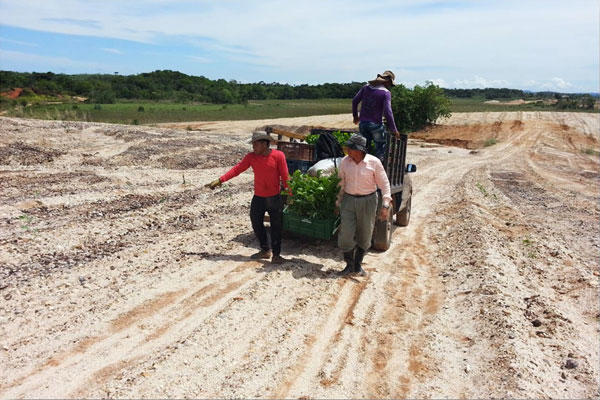Bioversity International researcher promotes forest restoration in Nature

'Gold rush: Forest devastated by mining is reborn', a note from Evert Thomas, a Bioversity International Associate Scientist, was published this week in Nature magazine.
In Nature’s 'Correspondence' section, Evert Thomas, Associate Scientist at Bioversity International, discusses "a series of affordable, socially inclusive and ecologically sound forest-restoration projects in Colombia, which could become a model for re-establishing forests and their biodiversity on millions of hectares of degraded lands that have been left unproductive after mining".
He writes about a technique, developed by Forestpa, one of Bioversity International’s key partners in Colombia, through which some of Colombia’s barren landscapes have been restored.
First, the pits and piles of material on the devastated site are evened out using bulldozers. Then the land is enriched with a nutritious cocktail of composted sewer sludge, benign microorganisms, and numerous other ingredients, and planted with hardy and fast-growing Acacia mangium trees, combined with 10–20 native tree species. "After 10 years, the A. mangium trees are logged and replaced with well-adapted native species to encourage diversity," writes Dr Thomas.
The approach involved local people and contributed to their livelihoods. Over a period of 10 years, it transformed a vast landscape of wastelands in the conflict-ridden Cácerces region into a lush forest with over 120 different native tree species and an abundance of wildlife.
Restoring forest landscapes is one of the strategies for tackling some of the major environmental problems of our time, notably climate change, loss of biodiversity and desertification. "The value of using native tree species in ecosystem restoration is receiving growing recognition among practitioners and policymakers. Native species are well-adapted to local environments and support native biodiversity and ecosystem resilience to a greater extent than would exotic planting material," said Dr Thomas, "but to ensure their successful establishment and ability to adapt over time to climate change, it's crucial to choose sufficient and appropriate seed sources".
Dr Thomas also contributed to the thematic study on 'Genetic considerations in ecosystem restoration using native tree species' a contribution to The State of the World’s Forest Genetic Resources report.
Read the full correspondence in Nature magazine
Photo: Post-mining restoration in Colombia using native tree species. Credit: Forestpa/L.G. Moscoso Higuita
